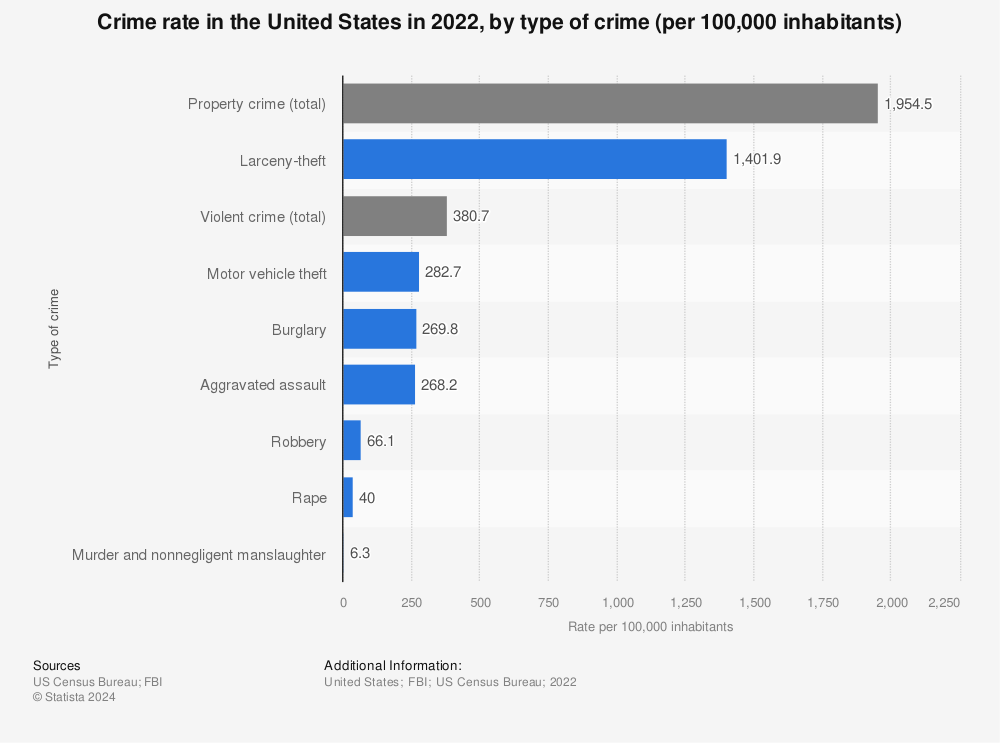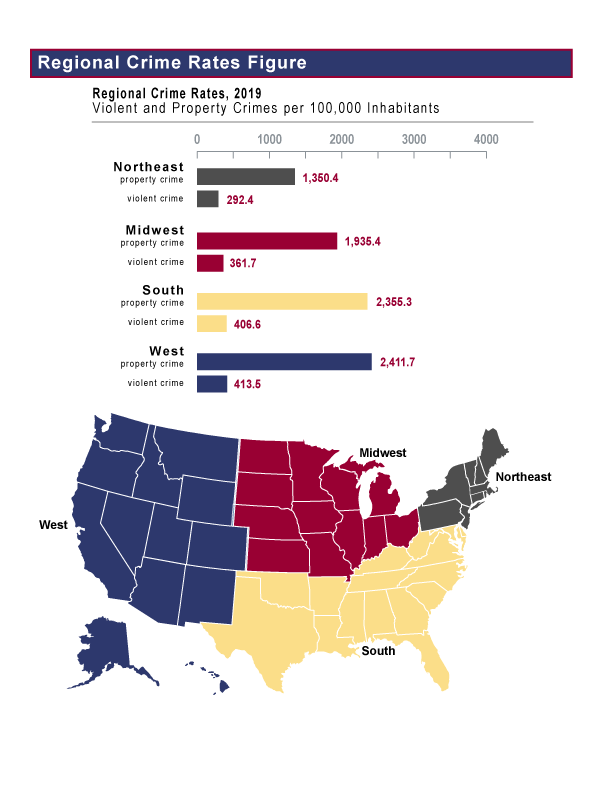
Crime is a problem that we as a society should be working to reduce. There are many different causes and explanations for why individuals commit crimes, which typically stem from various social issues. Crime can be defined as deviant behavior that violates cultural standards that describe how humans should behave. Not all crimes are reported to the police, in fact almost half of all crimes go unreported, so crime rates are not that accurate.

Conventional Crimes are property and violent crimes that concern citizens the most. Violent crimes involve either a threat of force or force itself while property crimes involve stealing property and money. On average, these crimes cost victims close to $20 billion dollars each year from medical expenses, time lost from work, and property damages and losses.
White-Collar Crimes are crimes committed through someone's occupation. These crimes include healthcare fraud, corruption, damages, and tax invasion. Corporate Crime is a crime that a corporation commits, it can include regulatory laws not being obeyed and dangerous products.
Victimless Crime is a crime that someone commits that does not have any unwilling victims which includes gambling, prostitution, pornography, and drug use.

Labeling Theory states that if someone is labeled as a criminal they are more likely to engage in criminal behavior. It also states that people are more likely to be labeled deviant because of race, social class, and appearance.
Differential Association Theory states that criminal behavior is learned by interacting with family and friends who are criminals themselves. The earlier in our life that we become associated with criminals the more likely than we will become a criminal.
Differential Justice Theory states that criminals can avoid criminal labels and hide crime due to the resources and power that they have. The poor and minorities usually face disadvantages because they more than likely cannot afford to hire good attorneys and private investigators to help prove their innocence that someone with more money has the ability to hire.
In 2020, there were 6.45 million property crimes and 1.31 million violent crimes. Larceny made up around 4.6 million property crimes and two-thirds of violent crimes were aggravated assaults.
Alaska and New Mexico saw high rates of crime while the New England States generally saw the lowest rates of crime.


Imprisonment is a very complex issue alone. There are many different things as to why someone may be imprisoned.
One example may be someone who is in poverty. Someone may resort to crime in order to obtain the basic needs to survive. When they get released from prison, they are still in the same situation they started, which can lead to a vicious cycle.
Another example is those who are arrested for substance abuse. Imprisoning someone while they are dealing with an addiction will not solve the issue at hand. People struggling with addiction need support through therapy and treatment.
The United States has the highest incarceration rate in the world due to the high number of people incarcerated for drug-related crimes.
This link will offer suggestions to reduce the risk of becoming a victim and help ensure physical safety. It also provides safety brochures that you can print to raise awareness among the public.
Some efforts to reduce crime include
"1. Establish good-paying jobs for the poor and urban areas
2. Establish youth recreation programs and in other ways strengthen social interaction in urban neighborhoods
3. Improve living conditions in urban neighborhoods
4. Change male socialization patterns
5. Establish early childhood intervention programs to help high-risk families
6. Improve the nation's schools
7. Provide alternative corrections for non-dangerous prisoners in order to reduce prison crowding and costs to lessen the chances of repeating offending
8. Provide better educational and vocational services and better services for treating and preventing drug and alcohol abuse for ex-offenders"
(Miller-Bellor & Giuliani, 2020, chapter 7, section 4).
Crime in the United States: Statistics and Facts https://www.statista.com/topics/2153/crime-in-the-united-states/#dossierKeyfigures
Crime Worldwide - Statistics and Facts https://www.statista.com/topics/780/crime/#topicOverview
Does Low Income Always Create High Crime Neighborhoods? https://communitywatchpaper.org/does-low-income-always-create-high-crime-neighborhoods
Deviance, Crime, and Social Control - Local to Global: The Sociological Journey https://pressbooks.pub/thesociologicaljourney/chapter/chapter-7-deviance-crime-and-social-control/
Metropolitan Police Department - Safety and Crime Prevention https://mpdc.dc.gov/page/safety-and-crime-prevention
